
Population - 1.3B ,Currency - Rupee,Geographic location - South Asia
Flight Hours -14 Hrs to 20 Hrs from USA & Canada, 8 Hrs to 12 Hrs from Europe, 4 hrs to 7 Hrs from Middle East , 8 to 12 hours from Africa,depending on Departure and Destination City.
Weather -Tropical . Rainy during May to August. Summer lasts between March and June in most parts of India. Temperatures exceed 40 °C (104 °F) during the day. The coastal regions exceed 30 °C (86 °F) coupled with high levels of humidity. In the Thar desert area temperatures can exceed 45 °C (113 °F). The rain-bearing monsoon clouds are attracted to the low-pressure system created by the Thar Desert. The southwest monsoon splits into two arms, the Bay of Bengal arm and the Arabian Sea arm. The Bay of Bengal arm moves northwards crossing northeast India in early June. The Arabian Sea arm moves northwards and deposits much of its rain on the windward side of Western Ghats. Winters in peninsula India see mild to warm days and cool nights. Further north the temperature is cooler. Temperatures in some parts of the Indian plains sometimes fall below freezing. Most of northern India is plagued by fog during this season. The highest temperature recorded in India was 50.6 °C (123.1 °F) in Alwar in 1955. The lowest was −45 °C (−49 °F) in Kashmir. Click here to Check weather in India
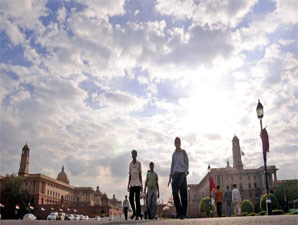
Travel Weather - Sept to May
Main languages - Hindi, English, Punjabi, Telugu, , Malayalam, Bengali, Kannada,
LOCATION : INDIA is located in Asia, the largest continent in the world. This country is set apart from the rest of Asia by the supreme continental wall of the Himalayas in the north, the Bay of Bengal to the east, the Arabian Sea to the west and the India Ocean to the south. India comprises of 28 states and seven union territories. The neighboring countries are Nepal, China, Bangladesh, Bhutan, Burma and Pakistan. Although India occupies only 2.4% of the world's land area, it supports over 1.1 Billion People.
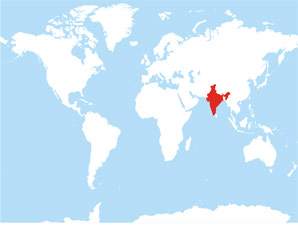
AIRPORT & TRAVEL : Apart from the capital of Delhi, the other major cities are Bangalore, Mumbai, Kolkata Chennai and Kochi. All these cities are well connected by Air, road and Railways. The approximate travel time from New York or Los Angeles to any of these cities are between 14 to 18 hours. There are over 80 airports in India of which 12 are international airports. Domestic and International carriers operate flights to connect all major locations across the world on a daily basis.

LANGUAGES: India is country rich in languages. There are a quite a number of languages spoken in India, some of these languages are accepted nationally while others are accepted as dialects of that particular region. India has 22 officially recognised languages. Hindi, in the official language of the Federal government of India. English is an associate official language. Sanskrit, the classical language of India, may be traced back to Rig Vedic period and is more than 5,000 years old. All the classical literature and the Indian epics have been written in Sanskrit.

There are over 70 Consulates and Embassies that operate in India and are located in the capital Delhi apart from few other major cities across. Foreign nationals coming to India are required to possess a genuine and valid national passport or any other internationally recognized travel document establishing his/her nationality and identity and bearing photograph of the foreigner and a travel visa. There is no provision of ‘Visa on Arrival” in India.
The currency of India is the Rupee, issued by Reserve Bank of India. The most commonly used symbol for the rupee is ‘Rs’ and code for the Indian rupee is INR. There are many establishments that are authorized to accept foreign currency, like the US dollar or the Euro. Apart from currencies, ‘Credit Cards’ and ‘Travelers Cheques’ are used for certain transactions.
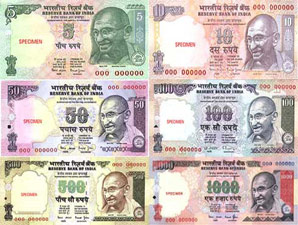
India has been enjoying the status of “Tourist Capital” during the last decade. The history, cultural diversity and the landscape attracted many tourists from across the world.
INDIA is a mosaic of faiths, cultures, customs and languages that has a unique and composite blend. Even with availability of modern resources, improved lifestyle and facilities, the values and beliefs of the country still remain unchanged. The culture of India has been shaped by the long history, its unique geography and the amalgamation of customs, traditions and ideas from the neighboring countries. The ancient heritages, which were formed during the Indus Valley Civilization and evolved further during the Vedic age, rise and decline of Buddhism, Golden age, Muslim conquests and European colonization has also had its influence. India's great diversity of cultural practices, languages, customs, and traditions are examples of this unique co-mingling over the past five millennia.

A birth place of many religious systems such as Hinduism, Jainism, Buddhism, and Sikhism have had its influenced other parts of the world too. India of the 21st century is carving a niche for itself as an economic superpower. The country has had remarkable breakthroughs and achieved in medical and engineering technologies. India has become the hub of Information technology in south Asia, owing to its vast pool of English speaking technical manpower pool.A treasury of art, architecture; philosophy, classical dances and music; the natural landscapes and its boundaries, India is divided in to four distinct geographies namely the North, South, East and West
The South India has a history and culture unique and distinct as there was not much of external influence. India is the site of one of the famous civilizations of the ancient world, the others being the Mesopotamian, Chinese, Egyptian, Greek and the Mayan (Central America). The earliest known civilization in India dates back to about 3000 BC and was largely confined to the valley of the river Indus hence it acquired the name the Indus Valley civilization.
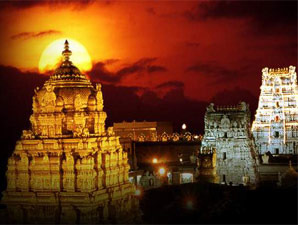
Apart from the British and Portugese, other Europeans like the Danes and Dutch also had trading posts in India. The French settlement was in Pondicherry, an enclave that they held even after the British had departed. The British represented by the East India Company established their commercial control over vast areas in India, which very soon had an administrative dimension to it. The history of India was one of constant struggle till independence. Historians use the beginning of mature agriculture in the Indus and Ganges valleys as the starting point of the story of Indian civilization. India is a great reserve of different kind of metals and they hasve been in use even in ancient times.
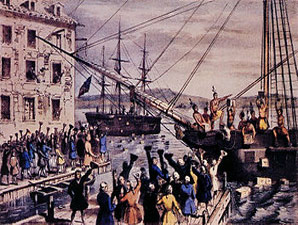
India has 325 languages and 25 scripts. Even today, all of them are alive and being used. Tamil is the oldest language using the Dravidian script. The ancient language of Sanskrit continues to be ever charming with its highly developed grammar. The reason why Indian Languages are not doing the disappearing act as those in many other parts of the world is because Indians, it has been found, are basically bilingual or even trilingual! It is from within this society that the struggle for freedom against the British rule grew and the largest national movement in history took shape.